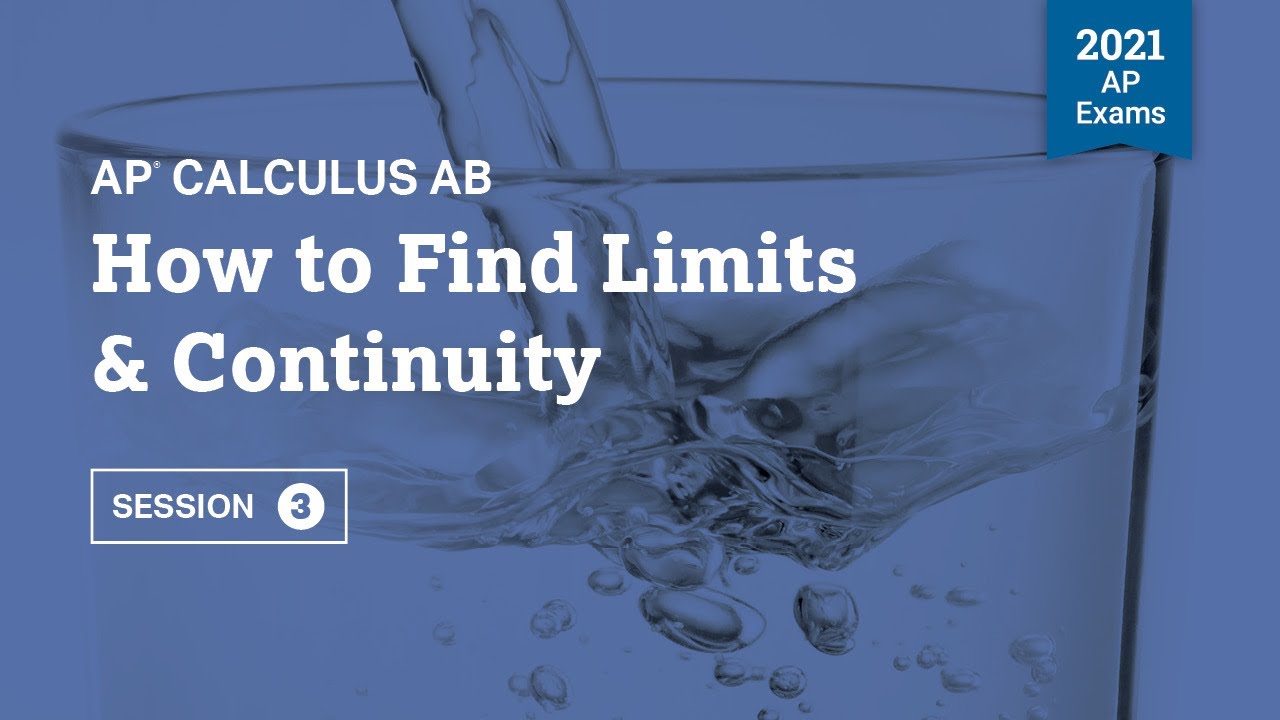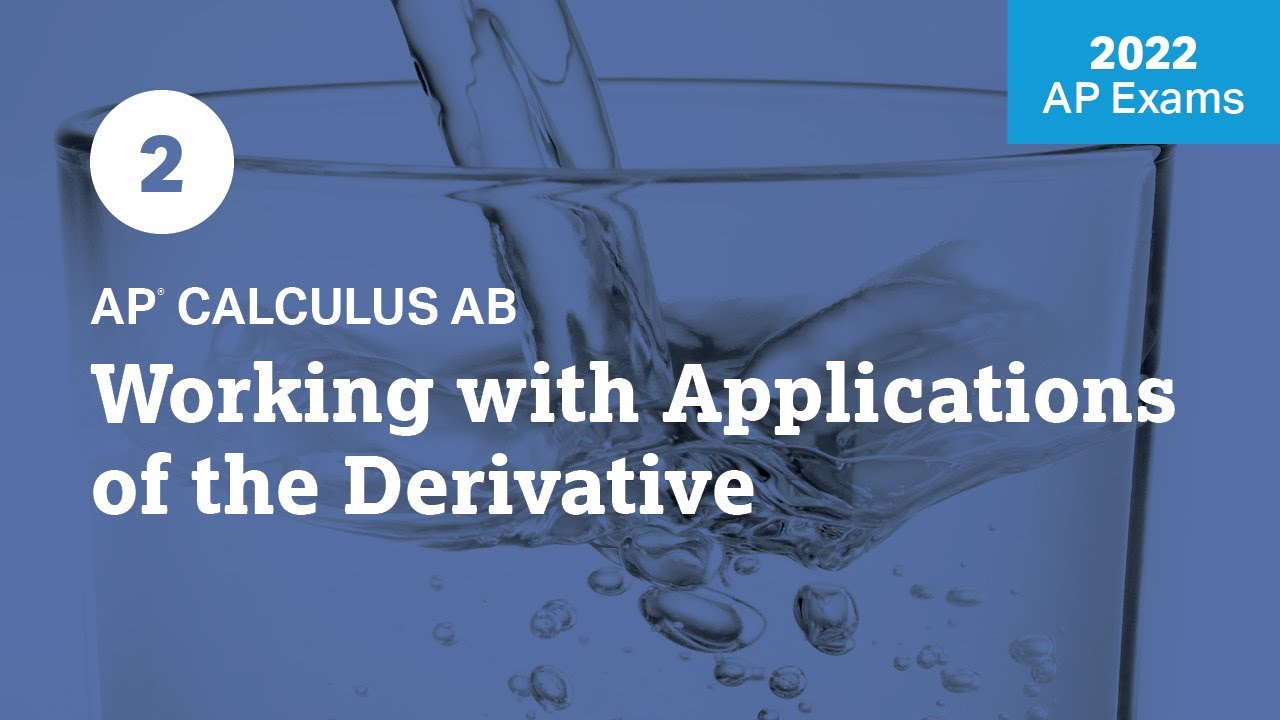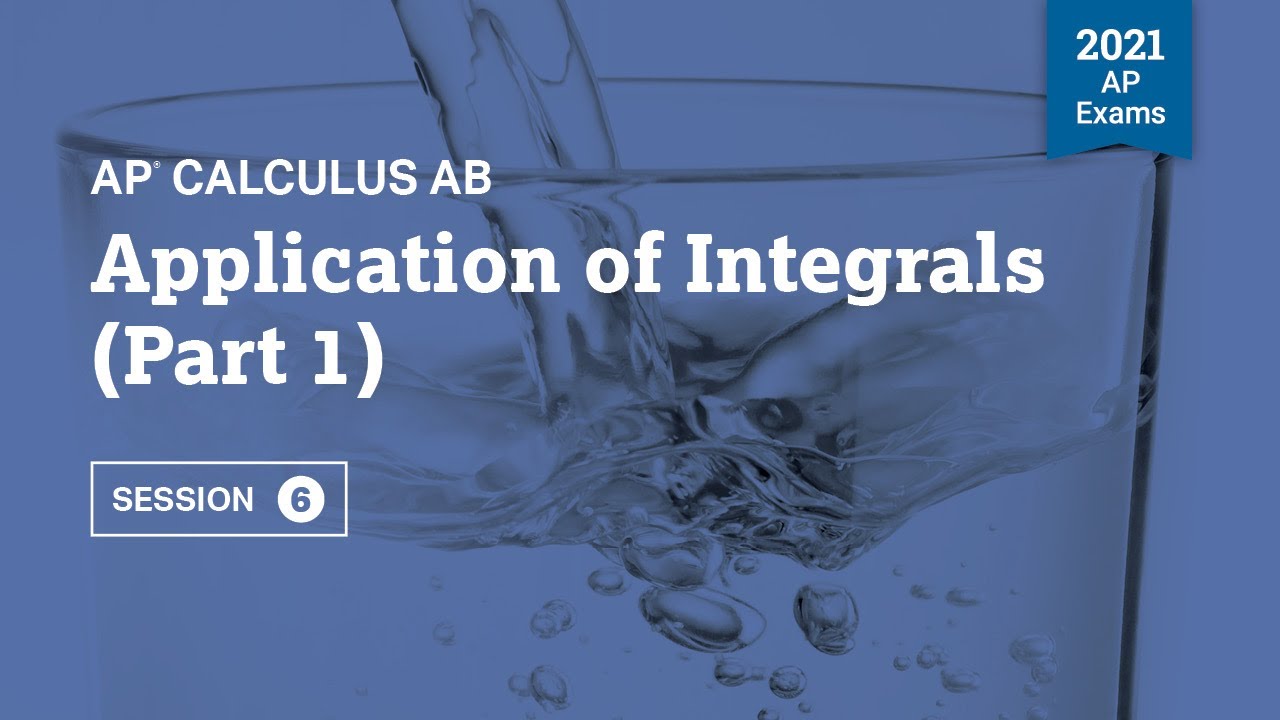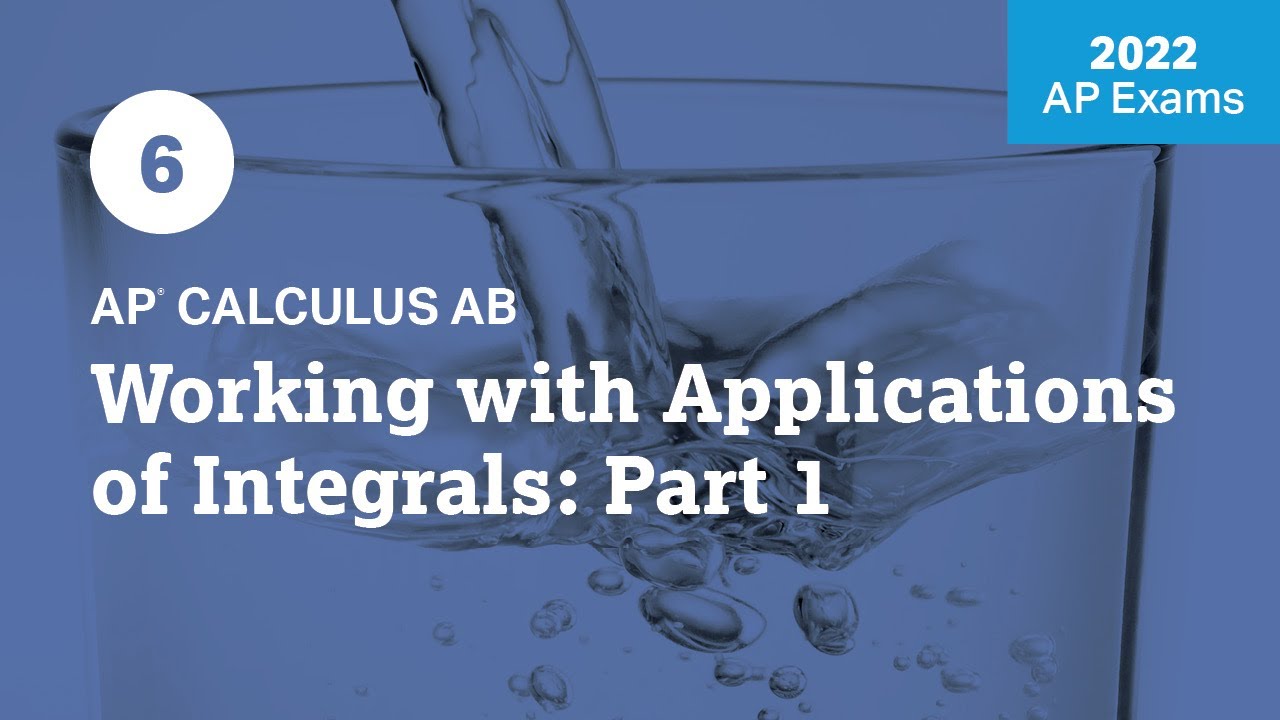2022 Live Review 8 | AP Calculus AB | Reviewing Multiple-Choice & Free-Response Questions
TLDRThe video script is a detailed transcript of a calculus lesson, likely aimed at AP Calculus students preparing for their exams. The instructors, Mark Corelli and another teacher, engage in a dynamic discussion covering a range of calculus topics. They start by expressing their excitement about the subject and its manipulative nature, which doesn't involve manipulation in a negative sense but rather the mathematical manipulation of functions. The lesson includes a review of multiple-choice and free-response questions, touching on integral calculus, the fundamental theorem of calculus, and differential equations. The instructors use humor and analogies to make complex concepts more accessible, and they emphasize the importance of understanding calculus concepts deeply rather than just memorizing formulas. They also provide tips for exam preparation, encouraging students to practice and make mistakes to learn better. The session concludes with advice on how to approach the AP Calculus exam, including managing time effectively and focusing on one topic at a time to avoid feeling overwhelmed. The instructors express their passion for teaching and gratitude to the students and fellow educators.
Takeaways
- 📚 **Final Day of Review**: The session marks the last day of a series of eight educational videos, emphasizing the rapid pace of the review.
- ⏱️ **Time Management**: The importance of time management is highlighted, with students having two weeks to prepare if they started on a Thursday, indicating the need for a study schedule.
- 📈 **Conceptual Understanding**: The instructors emphasize the joy of mathematical manipulation and the beauty of pure math, rather than just its applications.
- 🧩 **Integration Problems**: The session includes a detailed walkthrough of solving integral calculus problems, showcasing the step-by-step process and the importance of understanding the fundamentals.
- 🔢 **Multiple Choice Strategies**: Strategies for approaching multiple-choice questions are discussed, including focusing on limits of integration and function notation.
- 📉 **Graph Analysis**: The instructors demonstrate how to analyze the continuity and differentiability of functions by examining their graphs, a crucial skill for understanding the behavior of functions.
- 🔁 **Fundamental Theorem of Calculus**: The application of the Fundamental Theorem of Calculus is reviewed, showing how differentiation and integration are inverse processes.
- 🔍 **Slope Fields**: The concept of slope fields for differential equations is introduced, allowing students to visualize the solutions to differential equations.
- 📝 **Integration Techniques**: Various techniques for integration, such as substitution and completing the square, are discussed to solve complex integrals.
- 📐 **Geometric Interpretation**: The session covers the geometric interpretation of integrals to find areas and volumes, linking algebraic solutions to their geometric meanings.
- 📉 **Average Value of Functions**: The concept of average value of a function is explained, which is a key topic in calculus and often tested in AP exams.
Q & A
What is the main topic of discussion in the provided transcript?
-The main topic of discussion is the teaching of AP Calculus, specifically focusing on various calculus problems and concepts such as instantaneous rate of change, accumulation of change, and multiple-choice and free-response questions.
What does Mark Corelli teach?
-Mark Corelli teaches AP Calculus at Ryan High School in Denton, Texas, and has previously taught at Lafayette High School in Oxford, Mississippi.
What is the significance of the 'instantaneous rate of change' in calculus?
-The instantaneous rate of change is significant in calculus as it represents the derivative of a function at a specific point, which gives the slope of the tangent line to the function's graph at that point.
What is the integral from 1 to 7 of j of x dx, given the information in the transcript?
-The integral from 1 to 7 of j of x dx is 15, as determined by the accumulation of the given integrals and their respective intervals.
What is the derivative of arcsin(x) with respect to x?
-The derivative of arcsin(x) with respect to x is 1 / sqrt(1 - x^2), which is a standard result in calculus.
What is the purpose of the 'yellow sheet' mentioned in the transcript?
-The 'yellow sheet' is a reference tool that students are encouraged to use, which contains important calculus rules and formulas that can be helpful during exams or practice problems.
What is the importance of the Fundamental Theorem of Calculus in the context of the transcript?
-The Fundamental Theorem of Calculus is important because it connects differentiation and integration, stating that the integral of the derivative of a function from one point to another is equal to the difference in the values of the function at those points.
What is the strategy suggested for solving the problem involving the function h(x) = arcsin(x/2)?
-The strategy involves using the chain rule and the derivative of arcsin(x), then simplifying the expression to find h'(x), which is the derivative of h(x) with respect to x.
What is the concept of 'completing the square' used for in the transcript?
-The concept of 'completing the square' is used to simplify a quadratic expression in the denominator of an integral, making it easier to apply an integration technique such as u-substitution.
What is the advice given for students who are unsure about a particular calculus concept?
-The advice given is to focus on one concept at a time, practice it until it is understood, and then move on to the next concept. It is also suggested to make mistakes and learn from them as part of the practice process.
What is the significance of the Mean Value Theorem (MVT) in the context of the transcript?
-The Mean Value Theorem is significant as it guarantees the existence of a point where the derivative of a function has a specific value, which is useful for solving certain types of calculus problems.
Outlines
😀 Introduction and Course Summary
The video begins with a friendly conversation between the hosts, Merge and Mark, discussing their excitement for the eighth day of their course. They introduce themselves as Mark Corelli from Ryan High School in Denton, Texas, and mention their experience teaching at Lafayette High School in Oxford, Mississippi. The hosts express their enthusiasm for the topic of instantaneous rate of change and accumulation, hinting at the day's agenda which includes reviewing multiple-choice and free-response questions. They also acknowledge the different timings of their viewers, whether watching live or on a binge schedule, and encourage engagement with the material.
🧮 Solving Integration Problems
The hosts delve into a calculus problem involving the integral of a continuous function, j(x), over various intervals. They demonstrate the process of integrating from 1 to 5, 9 to 5, and 7 to 9, and then combine these to find the integral from 1 to 7. The discussion highlights the manipulation of integrals and the hosts' shared passion for the subject. They also touch upon the importance of writing functions and limits of integration clearly and correctly.
📈 Exam Format and Multiplication Free Response
The conversation shifts to the format of an upcoming exam, emphasizing that even though some problems are in the calculator active portion, it doesn't necessarily mean a calculator is required. The hosts then transition into reviewing multiplication free-response problems, noting that they will cover several problems, some of which are repeats from previous sessions. They also share a joke related to math teachers and functions, aiming to keep the learning environment light and enjoyable.
🔍 Analyzing Graphs and Functions
The hosts analyze a graph of a function, discussing its continuity and differentiability. They explore a piecewise function and use the conditions of continuity and differentiability to find the values of m and k. The process involves substituting values and solving a system of equations, leading to the discovery that 2m - k equals 7.
🧷 Fundamental Theorem and Slope Fields
The discussion moves to the Fundamental Theorem of Calculus, focusing on the relationship between derivatives and integrals. The hosts work through a problem involving the derivative of a definite integral and highlight the need to reverse limits of integration. They also examine a slope field related to a given differential equation, identifying the correct field by looking for patterns and understanding the behavior of the function.
📝 U-Substitution and Integration Techniques
The hosts tackle an integration problem using u-substitution, emphasizing the importance of choosing the right substitution to simplify the integral. They discuss the process of integrating by substitution, including the need to manipulate the integral to match the derivative of the substitution. The conversation also touches on the potential pitfalls of not changing the limits of integration when switching variables.
🤔 Error Analysis and Practice
The hosts discuss the value of making mistakes during practice, using a failed u-substitution as an example. They encourage students to learn from their errors and to practice various techniques to become more adept at solving problems. The conversation includes a reference to a TV show where learning from failures is a key theme, and the hosts share their appreciation for the process of elimination and rule application in problem-solving.
🔢 Completing the Square and Area Calculation
The hosts work through a problem involving completing the square to simplify an expression and then use it to find the area of a region bounded by two graphs. They discuss the process of integrating to find the area and emphasize the importance of sketching graphs to understand the problem better. The conversation also includes a reminder to students about the upcoming exam and the importance of rest and preparation.
📊 Volume Calculation and Exam Strategy
The hosts calculate the volume of a solid with a cross-section that is a square, using integration. They then discuss the format of the upcoming AP exam, including the number of questions and the time allocated for each section. They provide advice on how to approach the exam, emphasizing the importance of practicing and focusing on one topic at a time to avoid feeling overwhelmed. The hosts end with encouragement and well wishes for the students' success on the exam.
🎓 Final Advice and Closing Remarks
In the final paragraph, the hosts offer last-minute advice to students before the exam, including the suggestion to practice with a mock exam and to plan their study time effectively. They remind students that the exam is a measure of their knowledge on that day and not of their worth. The hosts express their gratitude to the students and teachers for participating in the sessions and encourage everyone to have a good summer and success in the following year.
Mindmap
Keywords
💡AP Calculus
💡Integral Calculus
💡Derivative
💡Chain Rule
💡Continuity and Differentiability
💡Fundamental Theorem of Calculus
💡Slope Field
💡U-Substitution
💡Completing the Square
💡Mean Value Theorem (MVT)
💡Free Response
Highlights
Mark Corelli and Marge discuss the instantaneous rate of change and accumulation of change in the context of AP Calculus.
They review multiple-choice and free-response questions, covering a range of calculus topics.
Mark and Marge explore the manipulation of mathematical language as a key aspect of enjoying math.
The presentation includes a problem involving the integral of a continuous function over different intervals, showcasing the use of integration techniques.
Mark demonstrates the process of adding the opposite of a negative integral value to find the integral over a different interval.
Marge emphasizes the importance of understanding the function notation and the limits of integration when solving calculus problems.
The discussion highlights the application of the fundamental theorem of calculus in finding derivatives and integrals.
Mark and Marge work through a problem involving the slope field of a differential equation, illustrating the concept of visual pattern recognition in math.
They delve into the technique of u-substitution in integration, showing how to choose an appropriate substitution variable.
Marge shares a joke about math teachers never growing old, reflecting the passion and humor in the teaching of mathematics.
Mark explains the derivative of an inverse trigonometric function, using the concept of a right triangle to aid understanding.
The transcript includes a step-by-step guide to finding the average height of a function over an interval, emphasizing the concept of average value in calculus.
Marge and Mark work through a problem applying the Mean Value Theorem to find the number of times a function's derivative takes a specific value.
They analyze a graph to determine the order of functions, their derivatives, and second derivatives based on the behavior of the graphs.
Mark and Marge discuss the concept of completing the square in a calculus problem, showing a unique algebraic technique to simplify integration.
The session concludes with advice on preparing for the AP Calculus exam, emphasizing the importance of practice, focus, and not getting overwhelmed.
Marge and Mark encourage students to approach the exam with confidence, reminding them that the test is a measure of their knowledge on that day, not their worth.
Transcripts
Browse More Related Video

2021 Live Review 3 | AP Calculus AB | How to Find Limits & Continuity

2021 Live Review 4 | AP Calculus AB | Integrals & the Fundamental Theorem of Calculus

2022 Live Review 1 | AP Calculus AB | Practicing with Derivatives & Chain Rule

2022 Live Review 2 | AP Calculus AB | Working with Applications of the Derivative

2021 Live Review 6 | AP Calculus AB | Application of Integrals (Part 1)

2022 Live Review 6 | AP Calculus AB | Working with Applications of Integrals: Part 1
5.0 / 5 (0 votes)
Thanks for rating: